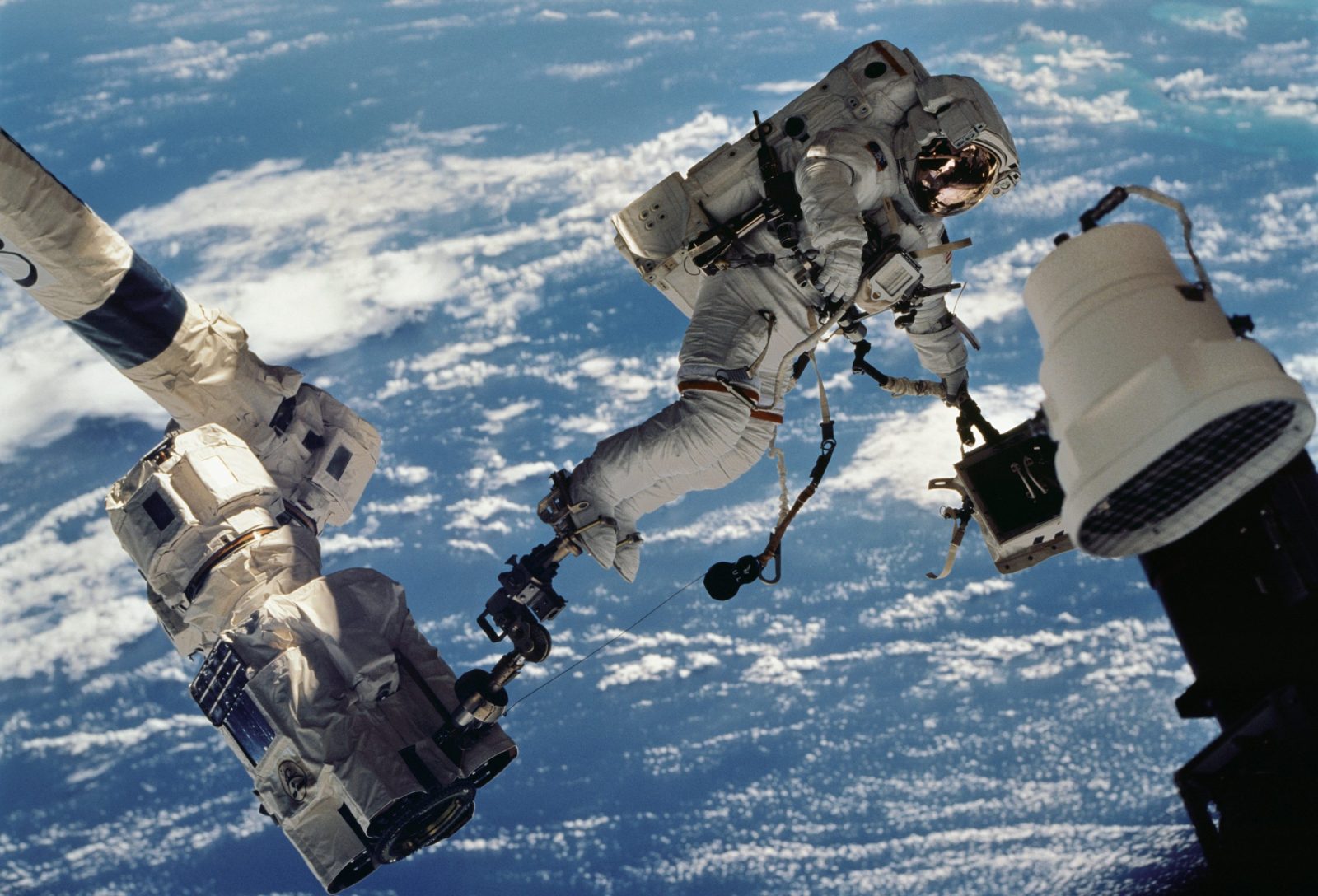
Space travel is one of the worst things your body can experience. Spending time in zero-g can cause bones to decalcify, muscles to atrophy, the immune system to weaken, the eye to flatten slightly and the optic nerve to swell. Time in space also exposes the human body to unhealthy doses of cosmic radiation, which can increase the lifetime risk of cancer.
Now, astronauts have another part of their body to worry about: the brain. According to a new paper published in Scientific Reports, too much time aloft can cause the brain’s ventricles—cavities filled with cerebrospinal fluid that cushion the brain, nourish tissue, and remove waste—to swell significantly. After astronauts return to Earth, the condition resolves itself only slowly—so slowly in fact that the authors of the paper recommend that all astronauts remain earthbound for extended periods before they are cleared for flight again.
“We found that the more time people spent in space the larger their ventricles became,” said Rachel Seidler, professor of applied physiology and kinesiology at the University of Florida and one of the authors of the study, in a statement. “Many astronauts travel to space more than one time, and our study shows it takes about three years between flights for the ventricles to fully recover.”
More from TIME
Seidler and her 10 co-authors conducted their work using a sample group of 30 astronauts; eight of them had most recently flown short-duration missions no longer than two weeks; 18 had flown six-month missions; and four had been aloft for a year. There were 12 first-time astronauts in the group and 18 who had flown at least twice. They underwent magnetic resonance imaging (MRI) of their brains both before they flew and, on average, six days after their return.
The researchers suspected they might see some brain changes among all 30 of the fliers. In space, fluids in the body tend to migrate upwards, which is why astronauts frequently complain of sinus congestion when they’re aloft and often look slightly puffy-faced when they make TV appearances. Inside the skull, weightlessness has its effect too—and that ought to have a significant impact on the ventricles.
The brain has four ventricles: two lateral ventricles—one each in the brain’s two hemispheres; the third ventricle near the center of the brain; and the fourth ventricle, in the brainstem. All four are connected to the spine and are continuously fed cerebrospinal fluid (CSF), which flows in and out in a regular cycle. In zero-g, that fluid drifts upward, overfilling the ventricles and causing them to increase in size. It also flows back out when the astronauts return to a gravity environment. But the ventricles themselves don’t recover so quickly.
When the researchers conducted their scans, they discovered that the astronauts who had flown two-week missions showed no ventricular enlargement. But for those who had flown six-month and one-year missions, even without excess CSF filling the cavities, the right lateral and third ventricle remained enlarged, anywhere from an additional 11% to 25% of their normal size—and there was no substantial difference between the two groups. “This pattern,” the researchers wrote, “suggests that the majority of ventricular changes in flight occur during one’s first six months in space.”
Added Seidler, in a statement: “We were happy to see that the changes don’t increase exponentially, considering we will eventually have people in space for longer periods.”
The ventricular damage done by zero-g appears to be cumulative. The right lateral ventricle of veteran astronauts, who had flown multiple missions, did not increase in size over the course of their most recent mission as much as the ventricles of the rookies—but that’s not because the veterans were less affected by zero-g. Rather, it’s because the right lateral was still enlarged from their previous flight.
Recovery from ventricular expansion takes time once crews return home. Follow-up MRIs showed that ventricles had reduced in size by 55% to 64% at the seven-month mark post-return, but full recovery took much longer. One subject who had spent a year aloft still showed ventricular enlargement after three years back on Earth—which is what led the researchers to set their minimum three-year benchmark before veteran astronauts should be assigned another mission.
Still unclear is what effect ventricular enlargement has on astronauts’ overall brain health. It does appear to reduce ventricular elasticity and leads to the ventricles doing a poorer job of flexing to accommodate CSF as it flows in and out. That, in turn, can lead to ventricles becoming clogged with CSF if they can’t drain properly or, alternatively, failing to fill with CSF as needed to relieve pressure on the cerebrospinal system.
Generally, ventricles tend to enlarge with age, according to the study—though what was observed in the astronauts’ MRIs exceeded what occurs naturally. But, the authors of the study write, it’s not clear how that might affect them cognitively. That very uncertainty, the authors of the study warn, is one reason to proceed cautiously.
“We don’t yet know for sure what the long-term consequences of this is on the health and behavioral health of space travelers,” said Seidler. “So allowing the brain time to recover seems like a good idea.”
More Must-Reads from TIME
- Cybersecurity Experts Are Sounding the Alarm on DOGE
- Meet the 2025 Women of the Year
- The Harsh Truth About Disability Inclusion
- Why Do More Young Adults Have Cancer?
- Colman Domingo Leads With Radical Love
- How to Get Better at Doing Things Alone
- Michelle Zauner Stares Down the Darkness
Write to Jeffrey Kluger at jeffrey.kluger@time.com